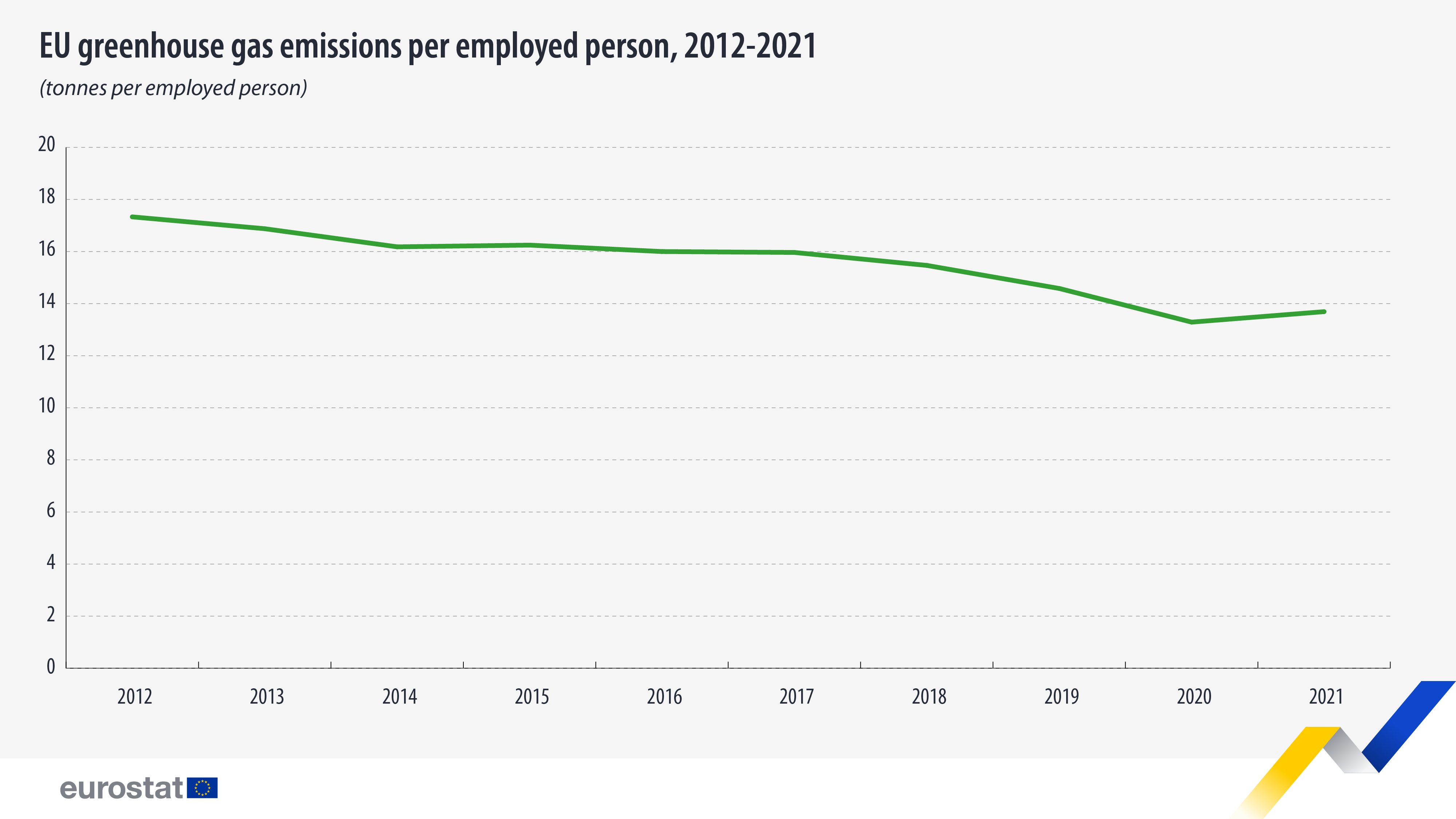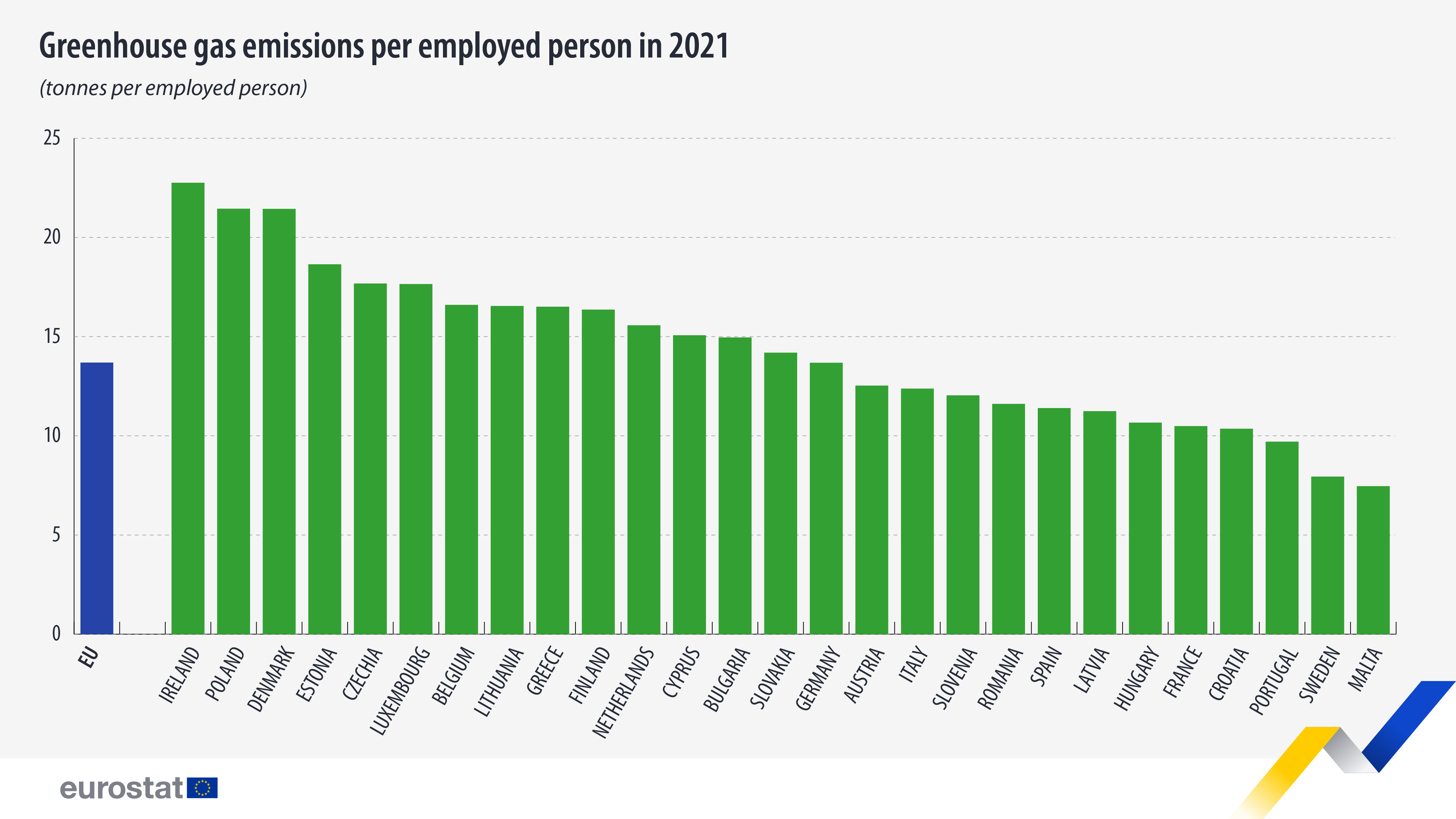GHG down by 3.6 tonnes per employed person in a decade

Over the last decade, the greenhouse gas (GHG) emissions from the EU economy per employed person decreased by 26% or 3.6 tonnes. In 2021, the emissions stood at 13.7 tonnes per employed person, compared with 17.3 in 2012.
2 factors contributed to this: a decrease in the GHG emissions as well as an increase in the employment. The emissions per employed person showed a continuous decline until 2020, however, in 2021, there was an increase of 0.4 tonnes compared with the COVID-19 affected 2020. Nevertheless, the GHG emissions per employed person in 2021 were still 6% lower than in the pre-pandemic year 2019.
Source dataset: env_ac_ainah_r2 and nama_10_a64_e
Looking at the country data for 2021, the highest emissions per employed person were recorded in Ireland (22.8 tonnes per employed person), Poland and Denmark (both 21.4). In contrast, Malta (7.5 tonnes per employed person), Sweden (7.9) and Portugal (9.7) recorded the lowest values.
In Ireland, most of the GHG are emitted by agriculture, forestry and fishing (41%) - this sector emitted 206 tonnes per employed person. In Poland 39% of the GHG are emitted for the supply of electricity, gas, steam and air conditioning (743 tonnes per employed person), whereas in Denmark most emissions relate to transportation and storage (52%), or 241 tonnes per employed person.
Source dataset: env_ac_ainah_r2 and nama_10_a64_e
This article marks the opening of the annual United Nations Climate Change Conference (COP), underway until 12 December.
For more information
- Statistics Explained on greenhouse gas emission statistics - air emissions accounts
- Thematic section on climate change
- Database on climate change
- Statistics for the European Green Deal
If you have any queries, please visit our contact us page.


